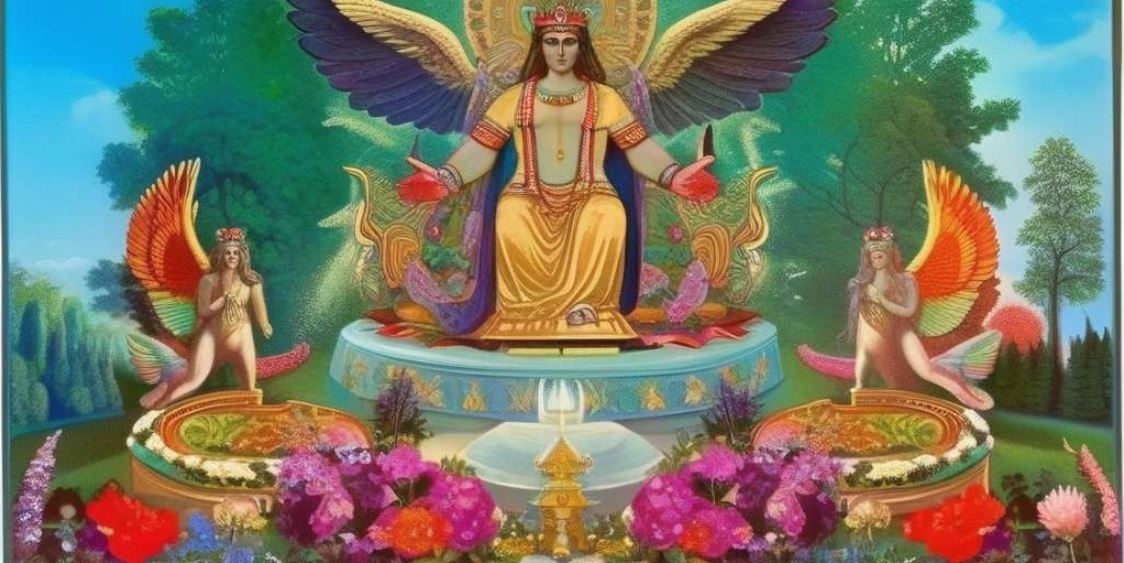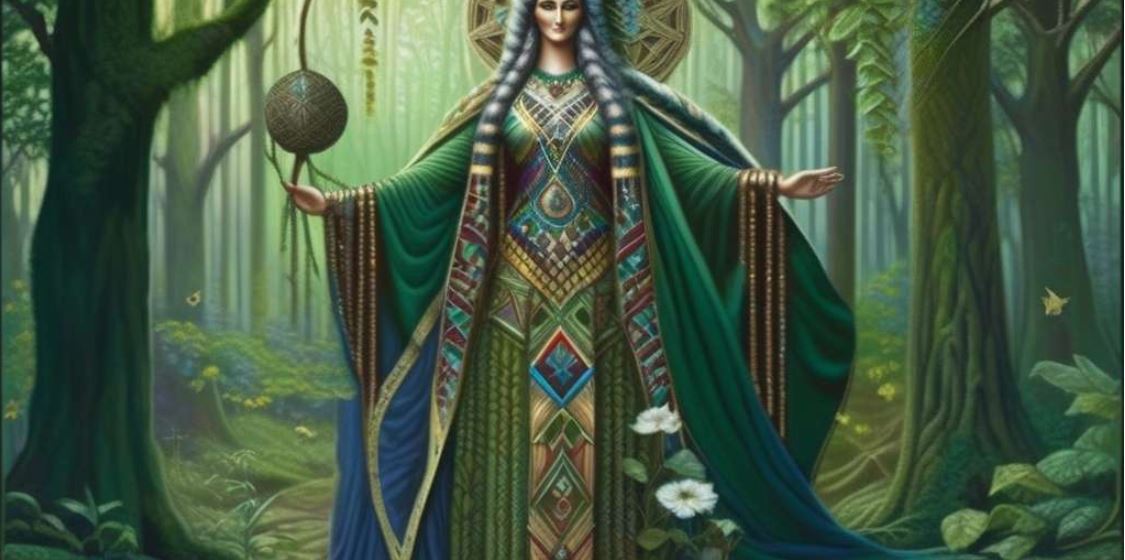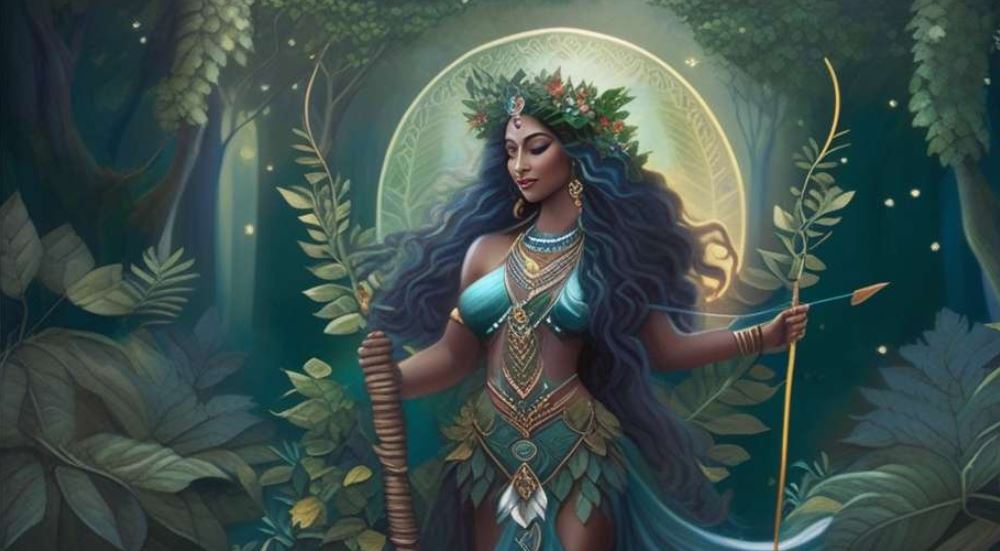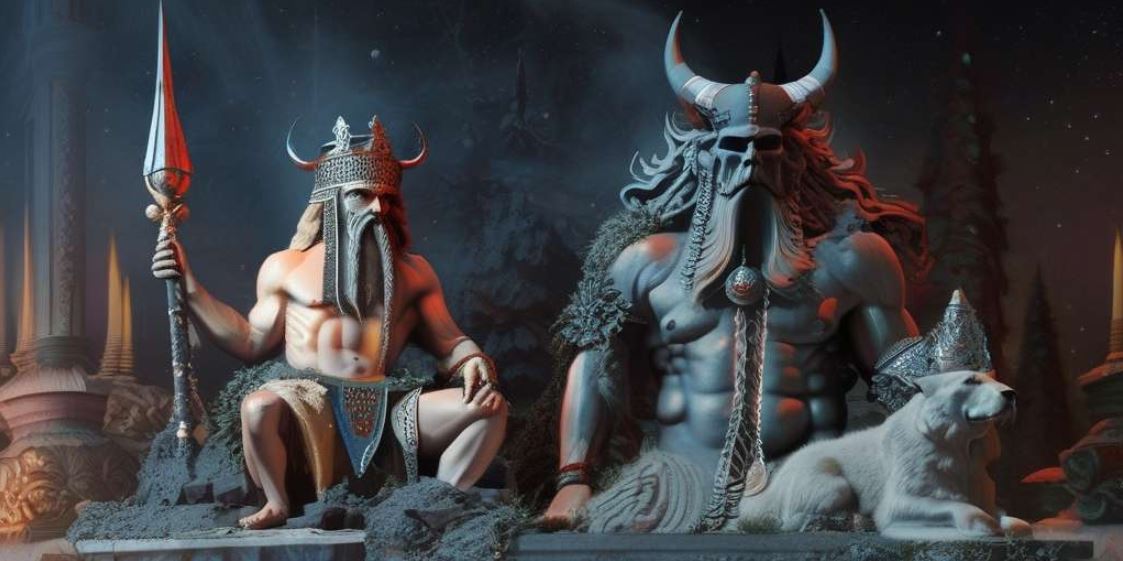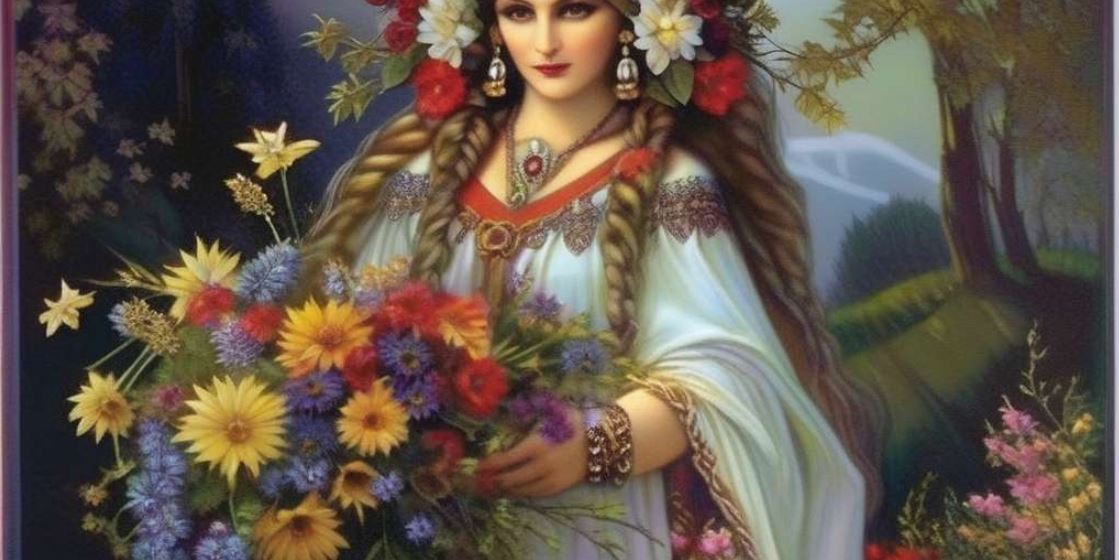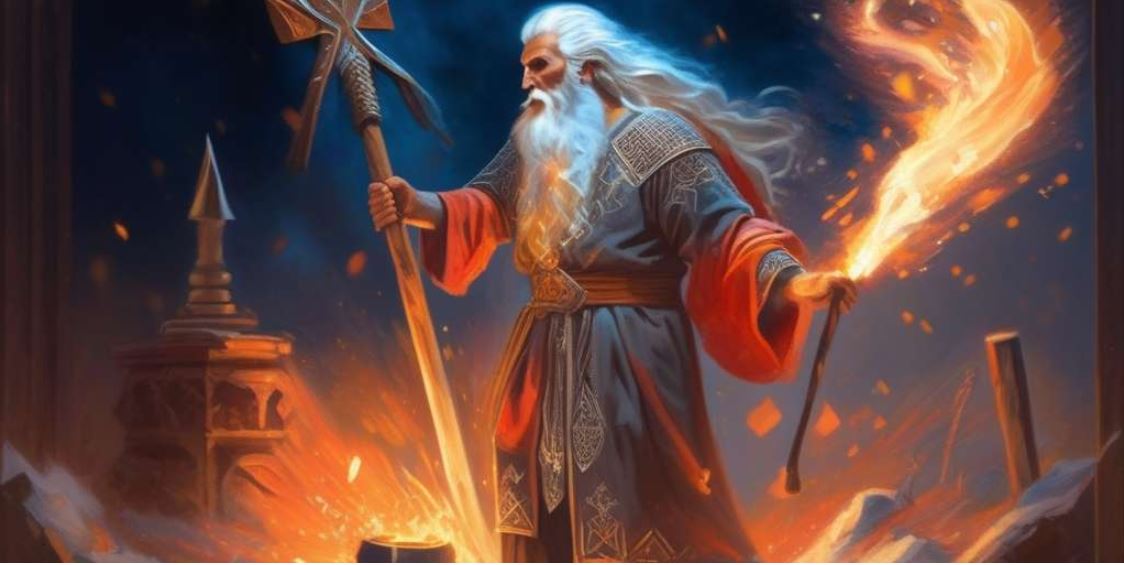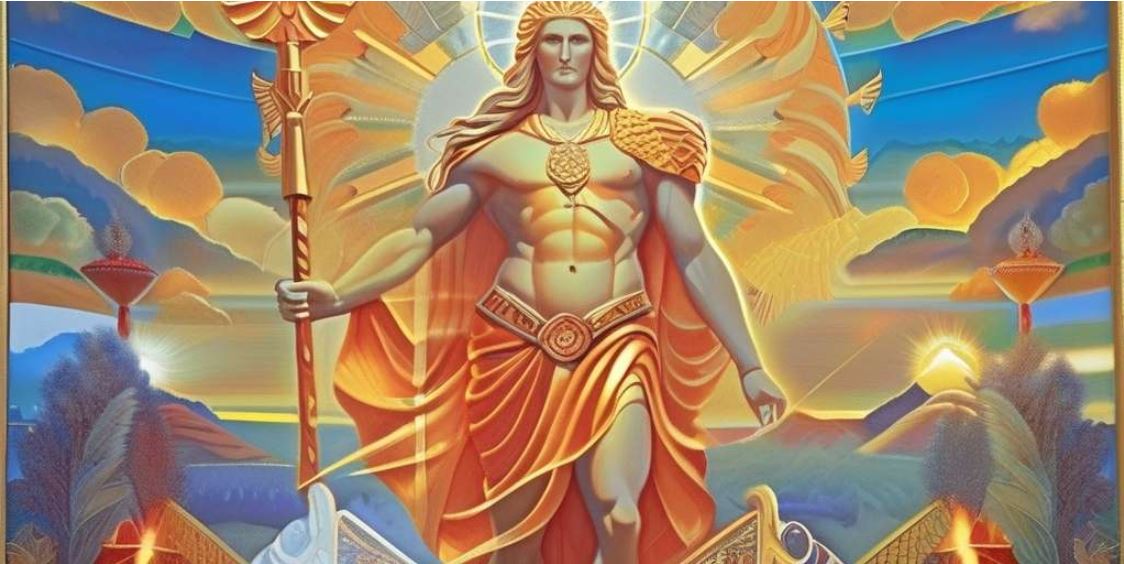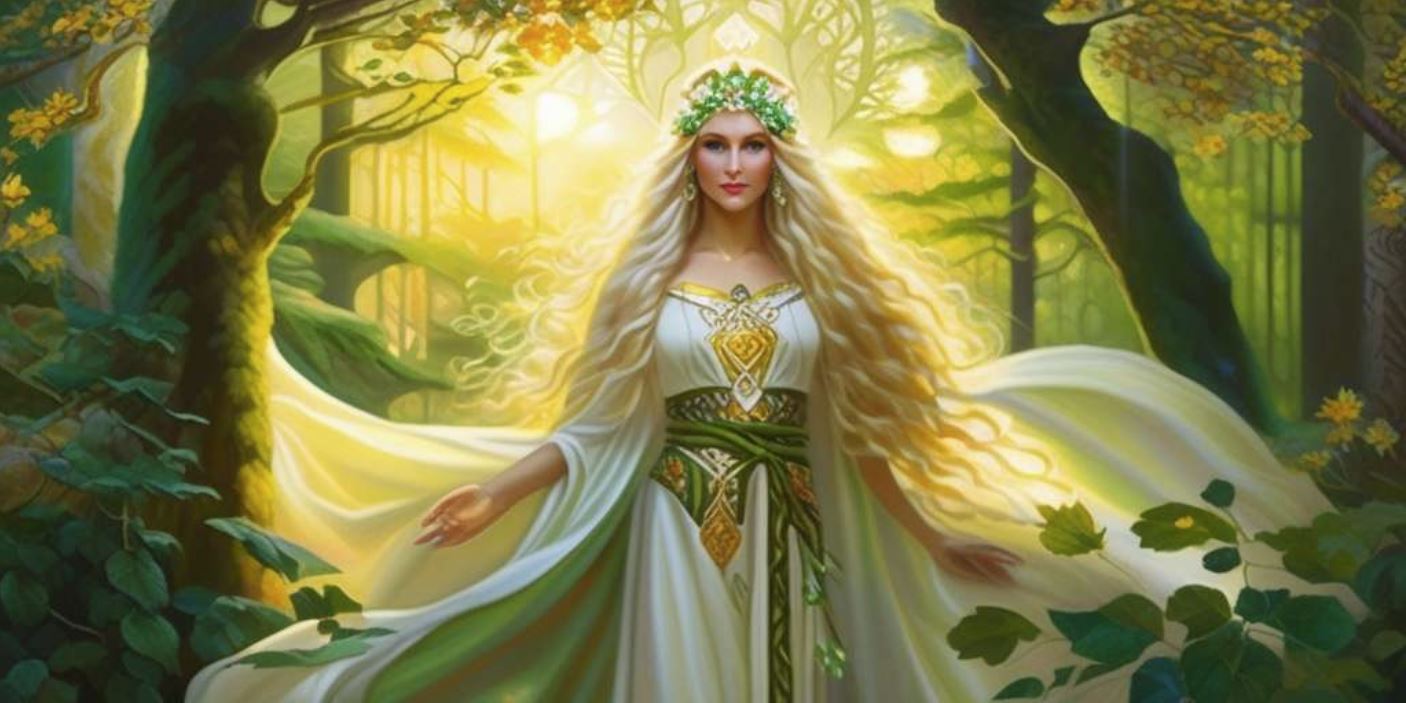Slavic God Svetovit: The Mighty Deity of the Elbe Slavs
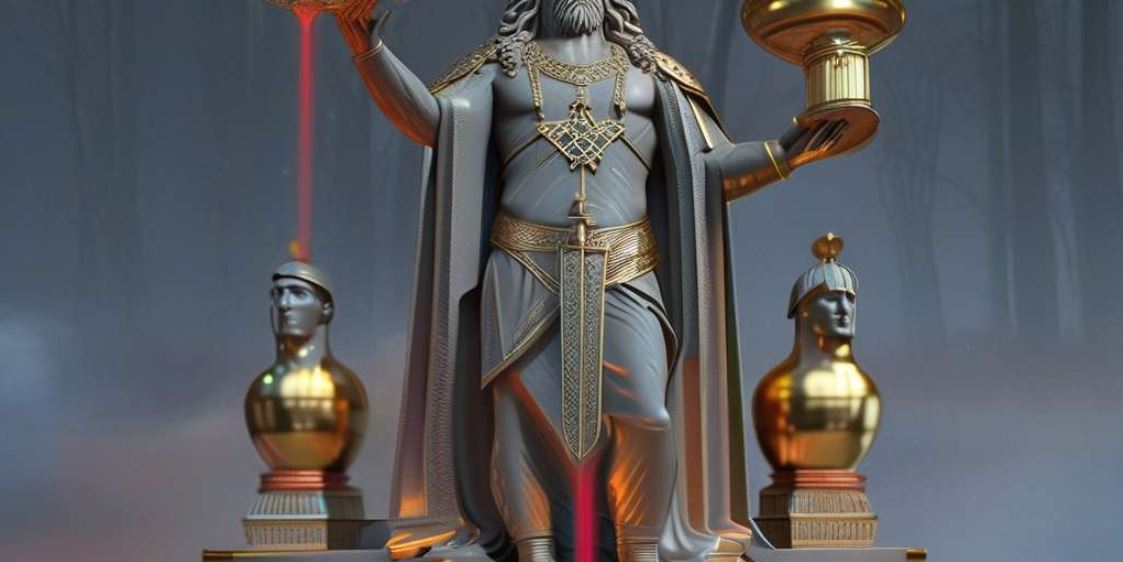
Slavic god Svetovit, a prominent figure in Slavic mythology, held great importance among the Elbe Slavs. The worship of Svetovit centered around a temple constructed on the island of Rugen, known as Arkona.
The statue of Svetovit within the sanctuary stood at an impressive height, symbolizing the cardinal directions. This deity held a sacred horn filled with wine or mead, determining predictions for the upcoming year’s prosperity.
The presence of a white horse, considered sacred to Svetovit, played a significant role in his cult. However, the decline of Svetovit’s worship occurred with the Danish conquest and the destruction of the temple.
Other Slavic sanctuaries and deities are also mentioned.
Overview of Slavic God Svetovit
Svetovit, the prominent Slavic god, held great significance in the mythology of the Elbe Slavs.
He was revered as the most important deity among the Slavs of the Elbe region. His worship was centered around the magnificent temple built in his honor at Arkona on the island of Rugen.
Within the temple, there stood a towering statue of Svetovit, intricately crafted from wood and adorned with exquisite relief ornaments. The statue, reaching a height of about eight meters, featured four heads and necks representing the cardinal directions.
Svetovit’s physical appearance depicted him with a clean-shaven beard and short hair, adhering to the customs of Rugen’s people. He held a horn of the bull in his right hand, which was filled with wine or mead by a knowledgeable priest.
The remaining liquid in the horn at the end of the year served as a divination for the prosperity of the following year, with an empty horn indicating a disastrous harvest.
The deity’s left hand rested on his hip, while he wore a knee-length cloak. The statue’s legs touched the ground, with its base concealed within the earth. Notably, the temple housed Svetovit’s possessions, including a formidable sword, a saddle, and a bridle, which emphasized his connection to warfare and victories.
Furthermore, another significant aspect of Svetovit’s worship was the sacred presence of a white horse. This horse, carefully tended and housed within the temple, symbolized divine protection and strength. It would traverse a winding course formed by lances planted in the ground before important endeavors, providing insight into the upcoming year’s prospects.
His left hand rested on his hip, while his right hand held the horn. The deity’s attire included a knee-length mantle, and his legs touched the ground, with the base of the statue hidden beneath the earth.
Additionally, Svetovit’s connection to warfare and victory was epitomized by the presence of a white horse within the temple. This sacred horse, along with Svetovit’s bridle, saddle, and an extraordinary-sized sword, hung alongside his statue.
The horse, cared for by the principal priest, played a role in predicting future events. Its path through a winding course of spears determined the forecast for the upcoming year.
The significance of Svetovit in Slavic society was profound.
Tributes and gifts were sent to his sanctuary, and a retinue of three hundred riders served him. The temple boasted a treasure trove of incredible value, including gold used for adorning the shrine.
The Temple of Svetovit at Arkona
The temple dedicated to Slavic god Svetovit stood proudly on the island of Rugen at Arkona. It was a sacred place of worship and a center of religious significance for the Elbe Slavs.
The temple, skillfully constructed with wooden materials, showcased intricate relief ornaments. It symbolized the reverence and devotion the Elbe Slavs had for Svetovit.
Within the temple, the grand statue of Svetovit commanded awe.
Standing at approximately eight meters tall, the statue featured four heads representing the cardinal directions. Svetovit’s physical appearance followed the customs of the people of Rugen, with a clean-shaven beard and short hair.
In the statue’s right hand, Svetovit held a horn cup, which was filled with wine or mead by a knowledgeable priest. The amount of liquid remaining in the cup predicted the prosperity of the upcoming year, offering insight into the fortunes of the harvest.
Svetovit placed his left hand on his hip, clad in a knee-length mantle. The statue’s legs touched the ground, with its base hidden within the earth. Nearby, the temple displayed Svetovit’s possessions, including a bridle, a saddle, and an extraordinarily sized sword.
Additionally, a sacred banner adorned the temple, carried at the forefront of military expeditions to ensure victory.
- The temple honored a sacred white horse, held in high esteem by Svetovit’s followers.The horse resided within the temple and its saddle, bridle, sword, and war banner stood near the statue of Svetovit.
The horse was cared for by the high priest and was believed to protect against those who opposed Svetovit’s worship.
- Prior to important endeavors, the horse was led on a winding course marked by lances driven into the ground.Depending
on whether the horse disrupted any of the lances, it prophesied a favorable or unfavorable year.
Svetovit’s temple at Arkona became a beacon of his power and garnered the attention and tribute of neighboring nations.
It amassed an unimaginable treasure, including gold used to embellish the temple.
Yet, the decline of Svetovit’s worship came with the conquest of Arkona by the Danish king Valdemar in 1168.
The sacred temple’s treasure was seized, and the statue of Svetovit was toppled and burned by the Danes, marking the tragic end of an era.
Physical Description of the Svetovit Statue
The statue of Svetovit within the Arkona temple was a magnificent representation of the Slavic deity.
Standing at approximately eight meters tall, it possessed four necks and heads, symbolizing the cardinal directions. Svetovit’s beard was cleanly shaven and his hair kept short, following the customs of the Rugen people.
In his right hand, Svetovit held a horn-shaped cup made from a bull’s horn. This cup was filled with either wine or mead by a knowledgeable priest. It was believed that the amount of liquid remaining in the cup at the end of the year predicted the prosperity of the upcoming year.
If the cup was empty, it foretold a disastrous harvest.
Svetovit’s left hand rested on his hip, while he wore a knee-length mantle. The statue’s legs made direct contact with the ground, with its base hidden beneath the earth.
Adjacent to the statue, significant belongings such as a bridle, saddle, and an exceptionally large sword were placed. The temple also housed a sacred flag that led the army in military expeditions, ensuring victory.
Svetovit’s Sacred Horn and Harvest Predictions
In Slavic mythology, Svetovit, the powerful deity worshipped by the Elbe Slavs, was associated with a sacred horn filled with either wine or mead. This horn held great significance as it was used to predict the prosperity of the upcoming year’s harvest.
According to the beliefs of the Elbe Slavs, the amount of liquid remaining in Svetovit’s horn at the end of the year served as an indicator of the abundance or scarcity of the harvest that awaited them.
If the horn was empty, it was considered a dire omen signaling a potential disaster in the coming harvest. Conversely, if the horn still held a significant amount of liquid, it was interpreted as a positive prediction, promising a bountiful crop.
The responsibility of filling Svetovit’s horn fell upon a knowledgeable priest who carefully managed the ritual. The accuracy of the prediction relied on the priest’s ability to gauge the quantity of liquid within the horn.
The Elbe Slavs placed immense trust in these predictions, as the success of their agricultural endeavors was closely tied to their livelihood and well-being.
This practice demonstrated the profound connection between Svetovit and the agricultural cycles of the Elbe Slavs, encapsulating their hopes and fears for a prosperous harvest.
Svetovit’s sacred horn served as a tangible representation of their dependence on the land and the divine blessings required for a productive and abundant harvest.
The Presence of the White Horse in Svetovit’s Cult
In the cult of Slavic god Svetovit, the presence of a white horse held great significance.
Housed within the temple, this horse was considered sacred and played a crucial role in Svetovit’s worship. It was cared for and fed by the main priest, symbolizing the deity’s divine connection to the animal.
The horse’s saddle and bridle, along with Svetovit’s sword and war banner, were displayed near his statue in the temple. Moreover, the white horse was believed to embody Svetovit’s power and protectorate, fighting against any opposition to his worship.
A unique ritual involving the horse took place prior to significant ventures, during which the horse was led along a winding path formed by spears planted in the ground.
Depending on whether the horse disturbed any of the spears, it was believed to foretell auspicious or adverse outcomes for the coming year.
This ritual served as a means of divination and decision-making, guiding the faithful in their future endeavors and further solidifying their devotion to Svetovit.
Please note that the importance of the white horse in Svetovit’s cult reflects the specific cultural and religious practices of the Slavic people, highlighting their deep reverence for nature and its connection to their beliefs.
Svetovit’s Role in Warfare and Victory
Svetovit, the mighty Slavic god, played a crucial role in warfare and securing victories for his worshippers. As the god of war and protection, Svetovit was believed to bless warriors and provide them with strength and courage on the battlefield.
His presence was seen as a sign of triumph, and it was common for his sacred banner to lead the army into battle. The sacred flag, carried at the forefront of military expeditions, was believed to ensure victory against enemies.
- Svetovit’s hand was adorned with an extraordinary sword, symbolizing his authority and power as the god of warfare.
- His temple housed a collection of weapons, such as bridles and saddles, symbolizing his association with horsemanship, a crucial skill in battle.
Before embarking on significant endeavors, a sacred ritual involving a white horse took place.
The horse, guided through a winding path of lances planted in the ground, either avoided or disturbed the spears. This divination process determined the favor of Svetovit for the upcoming year.
If the horse remained unaffected, it was seen as a positive omen, ensuring victory and success.
Svetovit’s influence as a war deity extended beyond the physical realm. Warriors sought his divine guidance and blessings, trusting in his power to turn the tides of battle in their favor.
With his presence and the rituals conducted in his name, Svetovit instilled confidence and belief in victory among his followers.
Decline of Svetovit’s Cult and Danish Conquest
As time passed, the cult of Svetovit faced a decline, eventually leading to its downfall due to the Danish conquest. In 1168, King Valdemar of Denmark conquered Arkona, the center of Svetovit’s worship, and seized the temple’s precious treasures.
The Danish forces destroyed the temple and the sacred statue of Svetovit, symbolizing the end of an era. The once flourishing rituals and offerings came to an abrupt halt. The suppression of Svetovit’s cult marked a significant blow to Slavic paganism in the region.
With the destruction of the temple, the Danish conquest sought to impose their own religious beliefs and control over the Slavic population. Svetovit, regarded as the god of the gods, had fallen, and his worshippers were forced to abandon their long-held traditions.
The loss of Svetovit’s cult wasn’t just a religious defeat; it also entailed the loss of cultural identity for the Elbe Slavs. The influence of Danish Christianity began to reshape the spiritual landscape, leaving behind remnants of a once-powerful deity.
Though the Danish conquest marked the end of Svetovit’s worship and the destruction of his temple, the memory of this Slavic god continues to live on in the pages of history, serving as a reminder of the rich mythology and religious practices of the Elbe Slavs.
Other Slavic Sanctuaries and Deities
In addition to the temple of Svetovit at Arkona, there were several other significant sanctuaries dedicated to various Slavic deities. These sanctuaries played an important role in the religious practices and beliefs of the Slavic people.
One such sanctuary was the Temple of Perun, dedicated to the god of thunder and lightning. Perun was highly revered as a powerful deity associated with strength and protection.
His temple, located in the mountains, attracted many worshippers seeking his blessings and guidance.
The Temple of Lada was another notable Slavic sanctuary, honoring the goddess of love, beauty, and fertility. Lada was worshipped for her ability to bring harmony and prosperity to people’s lives.
Her followers often visited her temple to seek her favor in matters of love, relationships, and family life.
Veles, the god of the underworld and magic, had a dedicated sanctuary known as the Veles Shrine.
This sanctuary served as a place of worship for those seeking Veles’ assistance in matters related to wisdom, knowledge, and divination. The shrine was often visited by those seeking guidance and protection from the spiritual realm.
These sanctuaries, along with many others scattered throughout the Slavic lands, formed a vital part of the religious landscape, offering worshippers a place to connect with their deities and seek their blessings.
……….











